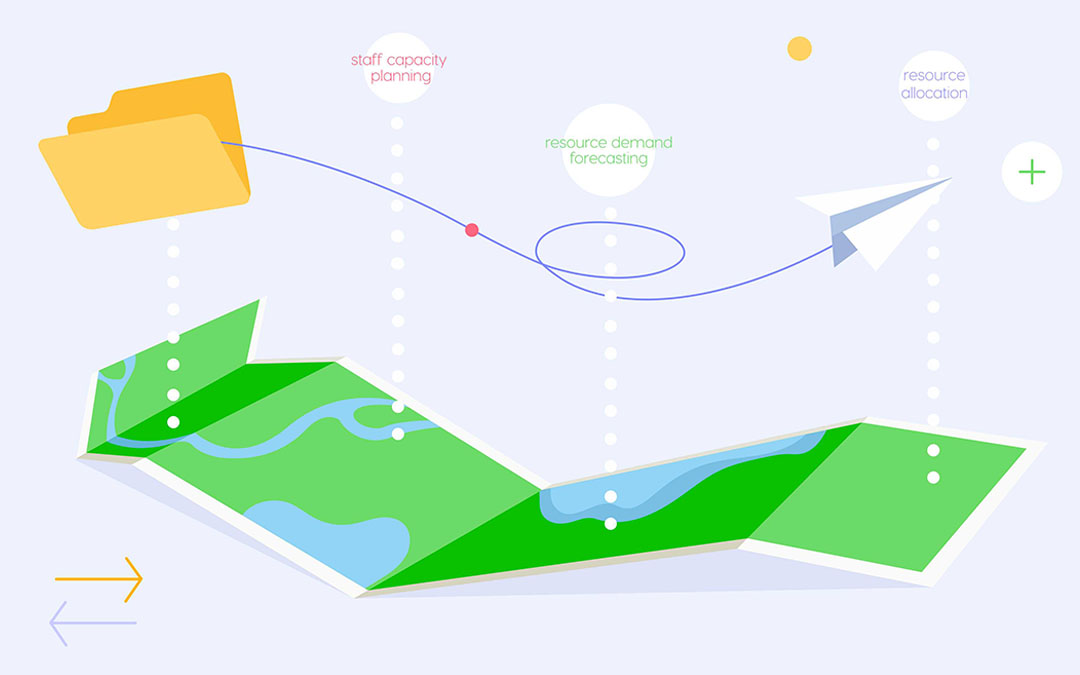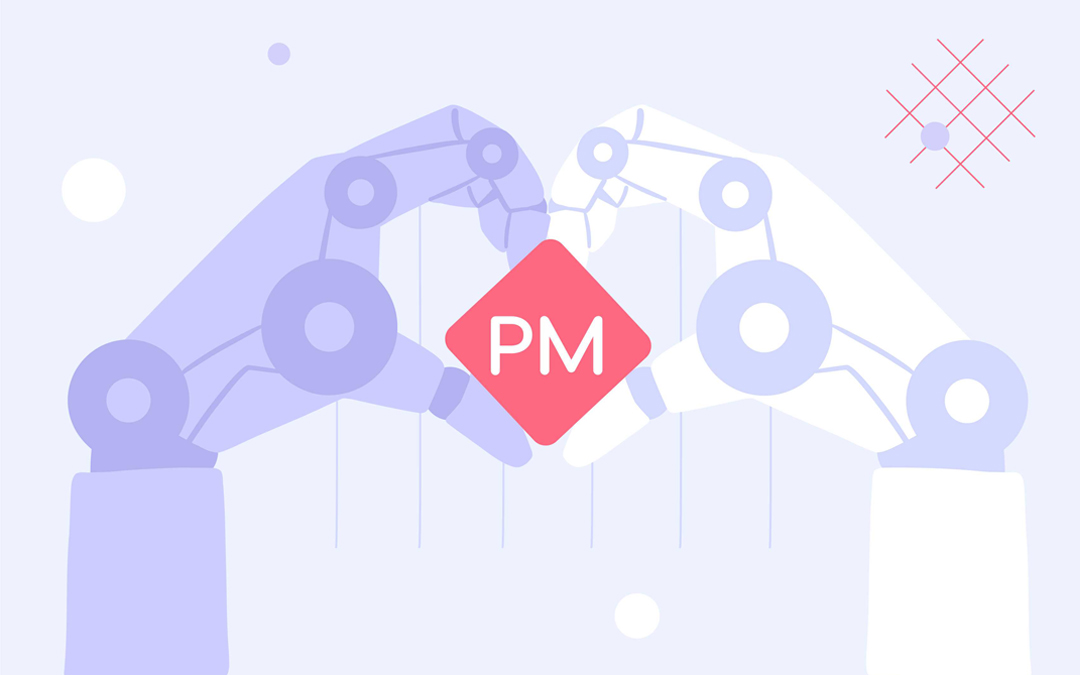If we had to choose one word that best describes R&D projects, it would be “uncertainty”—they have so many changing elements, and their outcomes are often hard to predict.
Nevertheless, this doesn’t mean that these projects cannot be successfully managed. Read the article to find out how to cope with uncertainty in R&D projects and increase your chances of achieving desired outcomes.
What is R&D Project Management?
Research and development project management involves managing research and development projects. Before we proceed to the recommendations on managing them effectively, let’s examine their specificity and what is special about their management.
Research and development (R&D) projects involve discovering new ideas, cutting-edge technologies, and solutions to create new products (or services) or improve existing ones. The key advantages of implementing these projects for a business organization cannot be overestimated:
- Developing innovative products or services will make companies different from their competitors, i.e., will give them a competitive advantage;
- Research and development makes it possible to improve the existing products or services, e.g., make them more cost-effective and correspond to the customers’ needs;
- R&D projects promote disruptive innovations, which play a key role in a company’s business growth.
At the same time, research and development projects have their specificity that makes them difficult to manage. There are two major challenging factors that affect the progress and success of R&D projects—uncertainty and change. In particular, in contrast to traditional projects (non-R&D) where objectives, timelines, budget, and resources can be more or less determined at the initial stages, R&D projects are much more unpredictable and subject to changes—e.g., changing market trends and/or customers’ needs, emerging opportunities, constant improvements to the developed product, etc. In addition, changing requirements are commonplace for this type of projects. All these factors cannot but affect a project’s scope, budget, timeline, and resources.
Also, there are a great number of initial unknowns in R&D projects—will the research bring the desired result? Will the developed product satisfy customers and be relevant in the market? Will it be possible to accomplish the project taking into account all possible changes and variability? All of these uncertainties make it extremely challenging to plan such a project (define its structure, timeline, required human and material resources, and cost) and guide it to successful completion.
Read more: Fighting Uncertainty in Organizations, Including Matrix Ones
Key Components of Successful R&D Project Management
There are numerous factors that contribute to the success of R&D portfolio and project management. Let’s take a look at the most essential ones. [2]
- Clearly defined project goals and mission: Despite the fact that R&D projects are full of uncertainties, the project team should understand the direction of their efforts and what goals they are striving for. Clear project objectives will help them set priorities and allocate resources in the right way.
- Project stakeholders’ support: This factor is crucial for sufficient funding of R&D projects, resource availability, and effective decision-making.
- Thorough project planning: Thorough planning helps identify key milestones, allocate necessary resources, and estimate project costs effectively.
- Effective communication with clients: Consultations with clients and taking customer feedback into account increase the value of research and development efforts.
- Availability of human and material resources: Skilled team members with the right expertise, availability of advanced tools, and sufficient financial resources are critical to executing research and development projects effectively, overcoming technical challenges, and delivering innovative results.
- Monitoring and control: Regularly monitoring progress ensures that the project stays aligned with its goals as well as helps track milestones, identify bottlenecks, and measure success. Project control mechanisms allow PMs to address deviations from the plan and keep the project on track.
- Flexibility and adaptability: Project management for research and development requires flexibility in decision-making and adaptability to new challenges or opportunities. Teams must be prepared to change strategies, reprioritize, adjust timelines, or reallocate resources if needed.
So, how to manage R&D projects effectively, address all this complexity and uncertainty, and contribute to achieving a company’s competitiveness? Read the next section to find out some useful recommendations.
7 Tips on Managing R&D Projects

Successful management of research and development projects relies on implementing R&D best practices along with effective project management recommendations. Here they are in detail.
1. Understand the context and the main focus of R&D projects.
The first and foremost step towards the successful orchestration of R&D projects is recognizing change and uncertainty as an integral part of the management process. The research and development environment is volatile and ever-changing; without understanding the environment, it will be exceptionally challenging to deal with it.
Under conditions of frequent changes and uncertainty, it’s important not to lose the focal point of R&D projects: first, they should correspond to an organization’s strategic goals; second, they should meet the client’s needs. R&D projects require a lot of effort and resources, so if they are out of tune with the above-mentioned parameters, they will be more likely to fail after all.
2. Apply the phase-gate process.
A phase-gate process (or stage-gate process) is an approach to the product development process, which involves breaking it down into phases—ideation, scoping, planning, development phase, testing and validation, and product launch. Upon completion of each phase (at the “gate”), a project manager should review the work done using the following criteria:
- the quality of execution;
- alignment of the interim deliverable with a company’s business objectives;
- feasibility of further work.
After this analysis, a project manager makes a decision regarding what to do next—e.g., proceed to the next stage, put the project on hold, or stop it.
In the frequently changing and uncertain R&D environment, the phase-gate process in general and regular reviews of the work done in particular reduce risks by timely responding to arising changes and unforeseen challenges, which helps keep a research and development project on track.
Read more: A Phase-Gate Process in Project Management: Questions and Answers
3. Don’t neglect planning.
The uncertainty accompanying R&D projects makes it extremely challenging to plan them. However, starting work without a plan is risky—without planning, you won’t be able to determine the number/amount of human and material resources required for project completion, which will only multiply the uncertainty and risks. Some companies can be tempted to apply Agile methodology because of its flexibility; but without proper planning, it won’t become a silver bullet ensuring the successful completion of an R&D project.
Applying a phase-gate process can help you address this issue. For example, instead of planning the whole project in advance, you can plan work and resources phase-by-phase, considering all possible risks and taking all the dependencies and uncertainties into account. Assessing the work done at the gates and making allowances for this experience will help plan further phases.
4. Document every project-related process.
Documentation plays a distinct role in research and development projects. At the very least, you should document the following things:
- A project’s progress;
- Every change made to the project;
- Communication with stakeholders.
This documentation will help manage current projects and become the source of valuable insights for future ones.
5. Manage resources efficiently.
Wise resource management is no less important for the successful completion of research and development projects, especially when multiple types of resources are involved and/or a company runs several projects concurrently. Here are the important considerations.
- First of all, you should plan resources’ capacity—this will allow you to estimate the number of people required for project completion and whether they’ll be able to fulfill the resource demand taking into account their involvement in other projects.
- Second, you should allocate resources effectively, i.e., with regard to their competences, capacity, and availability. This will ensure fruitful work on a project and minimize the risk of bottlenecks caused by an imbalanced workload.
- Thirdly, you should regularly track resource performance, which will allow you to make sure that the team members cope with their work well and detect bottlenecks before they ruin the workflow.
- Finally, it’s important to keep track of material resources (equipment, facilities, tools)—this will ensure their proper utilization and reduce the risks of unnecessary costs.
Read more: Resource Management Best Practices: 7 Tips to Consider
6. Ensure customer involvement.
The successful development of new products/services is impossible without customer involvement—it’s a driving force for the entire process. Customer feedback and opinions help create more user-friendly deliverables or improve the existing products/services. When the project deliverables perfectly meet the customers’ needs, it will ensure their satisfaction and contribute to growing a company’s profitability.
To ensure that the final deliverable meets clients’ needs, you can:
- Create a list of customers’ requirements—this will help you detect the pain points they need to address;
- Test and validate the prototype of the delivered product—in such a way you’ll be able to spot the need for improvements in the developed product;
- Involve customers in the evaluation of the final deliverable—whether it meets their needs and requires changes for its future versions.
7. Leverage flexible project management software.
The right project/resource management software can significantly simplify R&D projects’ orchestration, help cope with uncertainty, and make the process more effective. Epicflow is an example of such a solution—it’s AI-driven resource management software intended for work in a multi-project environment. Its flexibility and adaptability to changing circumstances make it a perfect tool for working under conditions of uncertainty. Let’s review its capabilities that can help effectively manage research and development projects.
Setting the right priorities
Epicflow prioritizes tasks across all projects in which a team member is involved and recalculates priorities automatically in response to changes in the project environment. Such an approach increases resource efficiency and facilitates the timely completion of multiple projects running in a company.
Providing a comprehensive overview of the whole project environment
In an uncertain R&D environment, it’s critically important to keep a bird’s eye view of every project, which is easily achieved with Epicflow. This helps assess the state of all projects running in an organization and timely detect issues and risks. With Epicflow’s features, you can get this information in a few clicks.
Competence management
When you need to create a project plan and allocate resources in an uncertain environment, the availability of essential information is the key. Epicflow’s Competence Management feature provides insight into every team member’s competences and their levels as well as shows their available capacity. Based on this information, Epicflow’s resource allocation advisor can suggest a team member to assign a task.
Forecasting future capacity and workload
The other way to reduce uncertainty is by taking advantage of predictive capabilities. With Epicflow’s Future Load Graph, you can see your team members’ capacity and workload for future projects. This information will help you prevent future bottlenecks and reduce risks as well as facilitate creating realistic and achievable project plans.
Testing project management decisions
Making informed decisions in project management is full of uncertainty—you can’t know for sure how they will impact the workflow. In the R&D environment, this issue becomes particularly acute. Epicflow can reduce this decision-making uncertainty by performing scenario analysis. Its AI-driven scenario planning software (What-if Analysis) allows you to test various project changes, see their potential impact on the project environment, and in such a way make the most reasonable data-driven decisions.
These are just some of Epicflow’s capabilities that facilitate efficient management of research and development projects. Schedule a consultation with our experts to learn how Epicflow can help you deal with uncertainty and changes, achieve the desired business outcomes, and grow profitability.
Key Takeaways
1. Research and development projects deal with discovering innovative ideas and solutions that facilitate creating new products or services or optimizing the existing ones. The key benefits of implementing R&D projects involve promoting innovation, which in turn gives companies a competitive edge, improving the existing products or services to ensure customer satisfaction and business success.
2. The main challenging factors in R&D project management are uncertainty and change. So, planning and executing these projects is a demanding task.
3. To manage research and development projects effectively, you need to understand the main focus of an R&D project, apply a phase-gate process, develop a detailed and flexible project plan, manage available resources effectively, and ensure customer involvement.
4. Leveraging effective resource management software like Epicflow will help you overcome the uncertainty of R&D projects, manage their resources most effectively, optimize decision-making, and achieve desired project outcomes.
Frequently Asked Questions
What is the life cycle of a research and development project?
As a rule, an R&D project lifecycle consists of the following stages: idea generation, concept development, feasibility study, design and development stages, implementation and testing phase, deployment, assessment and closure.
What are the three types of R&D projects?
R&D projects can be of the following types:
- Basic research projects focus on gaining fundamental knowledge without a commercial application.
- Applied research projects solve specific practical problems or create new products.
- Development projects involve applying research findings to create or improve products or services.
How to manage an R&D project?
To manage an R&D project effectively, you need to plan it thoroughly and at the same time keep the plan flexible, apply a phase-gate process, document every project-related process, engage customers, and ensure effective resource management. One more essential component that contributes to effective R&D project management is leveraging robust project management software with AI-driven capabilities.
What are the biggest challenges of research and development project management?
These are the major challenges of managing R&D projects.
- Uncertainty: The innovative nature of R&D projects makes it difficult to predict their timelines, costs, and outcomes.
- Resource allocation: The uncertainty makes it challenging to assign resources effectively, especially when multiple projects are running in a company.
- Ensuring cross-disciplinary collaboration: Coordinating teams consisting of employees with diverse expertise and ensuring their effective collaboration can be rather challenging.
- Compliance: This refers to combining innovation with the need to comply with regulatory standards.
What is the role of a project manager in R&D?
A project manager in R&D is responsible for project planning, resource and budget management, effective coordination of cross-functional teams, managing risks and stakeholders, and ensuring compliance of these projects with necessary regulations.
References
- A Guide to the Phase-Gate Process in Project Management. Retrieved from: https://www.indeed.com/career-advice/career-development/phase-gate-process
- Pinto, Jeffrey K., Slevin, Dennis P. (1989). Critical Success Factors in R&D Projects. Retrieved from: https://www.researchgate.net/publication/279941237_Critical_Success_Factors_in_RD_Projects#:~:text=The%20factors%20include%3A%20project%20mission,%3B%20communication%3B%20trouble%2Dshooting







